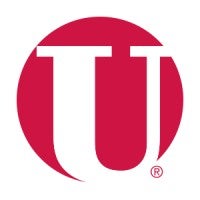This year, approximately 72 percent of companies said they have either started implementing zero trust policies or have plans to start soon. The zero trust model of security requires an organization to constantly authorize and authenticate all of the users on their network before they access data and applications. If your company is on the verge of putting zero trust in place, check out this list of the top zero trust security solutions.
Choosing a Zero Trust Security Solution
- What Is Zero Trust Security?
- Key Features of Zero Trust Security Software
- Best Zero Trust Security Solutions
- Cisco Zero Trust
- Akamai Intelligent Edge
- Forcepoint Private Access
- Palo Alto Networks
- Illumio Core
- Okta Identity Cloud
- Unisys Stealth
What is Zero Trust Security?
Zero trust security is a framework for validating user identities before they get access to critical systems. It works with any type of network environment, including cloud, on-premises, or hybrid. It works by combining tools like multifactor authentication (MFA), identity and access management (IAM), and endpoint security to authenticate user identities and keep unauthorized users from accessing delicate information.
Instead of “trust but verify”, zero trust is basically “trust nothing, verify everything”. Where traditional network access allowed users to get to anything on the network once they were in, zero trust separates the different parts of a network, preventing lateral access in the event a breach does happen.
Also read: Understanding the Zero Trust Approach to Network Security
Key Features of Zero Trust Security Software
Most zero trust security systems will include these key features:
Multifactor authentication (MFA)
Multifactor authentication requires users to use at least two different methods of authenticating their identity. One is usually a traditional login including a username and password, while the other might be a one-time password (OTP) sent to a phone number or email address associated with the account. It also might include security questions (e.g., “What was the name of your first pet?”) or a pin number that the user created when they set up their account. Having more levels of authentication is more secure, but it can also be frustrating for employees who may turn to shadow IT methods to circumvent security protocols.
Least-privileged access
Least-privileged access mandates that each user has the lowest level of access they need in order to do their job. For example, a salesperson wouldn’t need access to payroll data. Not only does this limit the damage from actual breaches by blocking lateral movements, but it can also prevent internal users from misusing company data.
Microsegmentation
Microsegmentation is a process that separates the network into different zones to ensure that entry points only go to one part of the network which helps ensure least-privileged access. This also helps contain attacks to one section of the network, rather than allowing malware to run rampant.
Also read: Microsegmentation: The Next Evolution in Cybersecurity
Device discovery and identity protection
Within a zero trust model, IT administrators need to know which devices exist on the network and whose credentials are on each device. This helps establish a baseline for normal activity on the network and makes it easier for the IT team to identify anomalies quickly. If something abnormal happens, like a user entering their credentials on a device they don’t normally use, the system can flag the activity for IT to investigate.
Best Zero Trust Security Solutions
Each of the following zero trust solutions has good user reviews and provides a comprehensive approach to network security.
Cisco Zero Trust

In 2018, Cisco acquired Duo Security, an access management leader that has helped Cisco solidify its zero trust offerings. Cisco Zero Trust secures access across your entire network, including all applications and folders. The platform authenticates user and device identity, workloads, applications, and any indicators of compromise to speed up remediation. It enforces least-privileged access and continuously verifies that traffic doesn’t include threats while flagging and analyzing anomalous or risky behavior.
Cisco Zero Trust provides extra network security while also making it easy for legitimate users to get the access they need. This keeps companies safe while preventing users from looking for ways around frustrating security measures.
Pros
- Consistent security experience regardless of whether employees are remote or in-office
- Good visibility across entire network environment
- Detailed logs and reports
Cons
- Implementation and deployment can take awhile
- Requires hands-on management from IT
Akamai Intelligent Edge

Akamai Intelligent Edge Platform is a global threat protection solution that protects applications and APIs while securing access across your network. The cloud-based system offers single sign-on (SSO) with MFA to make signing in easy for authorized individuals while still offering a heightened level of security. Akamai also has strong footholds in edge computing and content delivery to further improve the speed of its platform.
The Intelligent Edge Platform includes advanced threat protection to defend against complex malware or more intricate hacker attacks. It also offers advanced DDoS mitigation and a 24/7 security Operations Command Centre to help businesses remediate threats.
Pros
- Compatible with a variety of APIs
- Intuitive dashboards for monitoring and managing threats
- Admins can create customizable rules for alerts
Cons
- Default rules may block valid requests
- Stores data on a third-party cloud which could be a security risk
Forcepoint Private Access

Forcepoint Private Access is a zero trust security platform that doesn’t require a VPN to be successful. Thanks to the platform, employees can easily work at home or in the office with no changes to their process. Forcepoint also allows organizations personal access, so their employees can only get to the data and applications they need. Companies can also hide their private apps from the rest of the internet to reduce the likelihood of an attacker targeting them.
Forcepoint Private access helps IT monitor device usage and which applications and users are consuming which resources. With greater visibility into the network, IT teams can identify and investigate anomalies and threats faster.
Pros
- Employees don’t need a VPN to access private company resources
- Provides a holistic security infrastructure
- Effectively enforces security policies
Cons
- Data stored on third-party public clouds could leave organizations vulnerable
- Implementation can be difficult
Palo Alto Networks

Palo Alto Networks offers a zero trust approach as part of their Network Security suite. It provides a centralized management console allowing high visibility into the network along with detailed reports and automatic threat response. Palo Alto received high scores in a variety of independent security tests covering endpoints, firewalls, gateways, and intrusion prevention systems.
To strengthen their security offerings, Palo Alto has also recently acquired CloudGenix, RedLock, Twistlock, and PureSec. Thanks to these acquisitions, Palo Alto has security options for cloud environments, containers, and SD-WAN.
Pros
- Detailed reports help with threat investigations
- Responsive and helpful technical support
- Good monitoring and analysis for cloud environments
Cons
- Implementation can sometimes take several months
- The product is still maturing, so there are frequent updates
Illumio Core

Illumio Core is a zero trust security solution centered around the principle of microsegmentation. It prevents lateral movement in on-premises data centers and cloud environments by separating them and then securing each one individually. By viewing how applications are communicating with each other, companies can get vulnerability insights and start addressing them. They can also create custom segmentation policies to cover a variety of scenarios.
Illumio Core includes a Policy Compute Engine (PCE) that builds a live map showing how applications are communicating and helps businesses create ideal segmentation policies around that information.
Also read: Illumio Applies Policies to Advance Data Center Microsegmentation
Pros
- Great traffic discovery and visualization
- Easy to set up microsegmentation
- Excellent customer and engineering support
Cons
- Reporting is all or nothing, so users have to filter to get what they want
- Best practices for running the tool can be a little murky
Okta Identity Cloud

Okta Identity Cloud is an IAM system centered around zero-trust policies. It includes options for both workforce identities and customer identities to provide the right level of access for each user. Both forms of identity provide SSO and MFA options as well as lifecycle management to prevent former employees or customers from retaining access after they’ve separated from the company. Okta protects on-premise and cloud applications without changing their functionality.
With the platform services, Okta Identity Cloud can also automate process-driven workflows like employee onboarding and offboarding. It also collects device identity and context to provide a passwordless experience in some instances.
Pros
- Easy to use
- Automates repetitive tasks
- Helps companies stay compliant with many international security standards
Cons
- Initial setup can be a little complex
- First line support can sometimes have issues with complex problems
Unisys Stealth

Unisys Stealth is a zero trust security solution built to reduce the complexity often associated with the zero trust model. It works with both legacy and new networks, shrinking attack surfaces and isolating threats that do breach the network. Using microsegmentation, Unisys Stealth separates critical data, making it more difficult for attackers to reach. The platform also allows IT to respond in near-real time and isolate devices acting suspiciously in as little as ten seconds.
Unisys boasts that its platform can be implemented in as little as an hour to get networks protected quickly and eliminate downtime. The system also offers some biometric sign in options.
Also read: Unisys Simplifies Microsegmenation to Enhance IT Security
Pros
- Customizable dashboards
- Intuitive user interface
- Offers a five-step methodology for implementing a zero trust strategy
Cons
- Network traffic analysis capabilities are limited
- No on-premises deployment options for Mac devices
Read next: Using Identity Access Management to Secure WFH Networks


